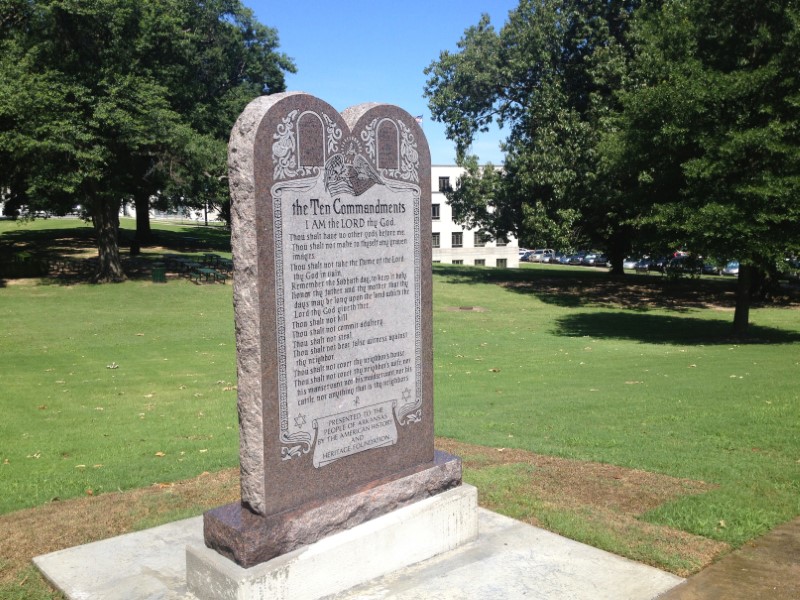
By Steve Barnes
LITTLE ROCK, Ark. (Reuters) – A newly installed Ten Commandments monument on Arkansas state Capitol grounds was destroyed on Wednesday by a man police said drove his vehicle into the granite slab and posted the incident on Facebook.
“It was shattered into a lot of pieces,” Chris Powell, a spokesman for the Secretary of State and Capitol Police, said in an interview.
The suspect, identified as Michael Reed, 32, was arrested on three charges, including defacing an object of public interest. Police did not release Reed’s motive for toppling the monument installed in Little Rock on Tuesday.
Republican state Senator Jason Rapert, the main backer of the monument, said a replacement has been ordered.
“Frankly this guy was in a state of mind that he could very well have hurt somebody,” he said at a news conference.
A Facebook Live video posted to the account of a person named Michael Reed appears to show the slab’s destruction.
In the vehicle, a person can be heard saying: “Oh my goodness. Freedom,” and driving more than 20 mph (32 kph) until a smashing noise is heard.
“He actually was videoing it and broadcasting it live on Facebook as it happened,” police spokesman Powell said, adding an officer patrolling nearby arrested Reed.
No lawyer was listed for the suspect in online jail records.
In 2014, a person with the same name and age as the suspect used a vehicle to smash a Ten Commandments monument on Oklahoma Capitol grounds, law enforcement in Oklahoma said.
Reed then fled the scene and went into a federal building. He made threats against then President Barack Obama, they said. News reports in Oklahoma said he was never formally charged.
Arkansas has not officially confirmed whether the same Reed was involved in Wednesday’s incident, Powell said.
The 6-foot (1.8-meter) monument in Little Rock was funded with $26,000 in private donations. Legislation permitting it on the Capitol grounds was enacted in 2015, and whether that was appropriate has been debated ever since.
Courts have ordered the removal of similar religious monuments erected in Alabama and Oklahoma, which had rebuilt its monument after it was destroyed.
A civil liberties group has pledged a court challenge in Arkansas, saying the monument showed an unconstitutional government preference for a certain religion.
Since Arkansas’ Ten Commandments monument act was proposed, satanists and other groups have sought state permission to place markers on Capitol grounds, but their requests were rejected.
(Reporting by Steve Barnes in Little Rock and Jon Herskovitz in Austin, Texas; Editing by Taylor Harris and Grant McCool)


